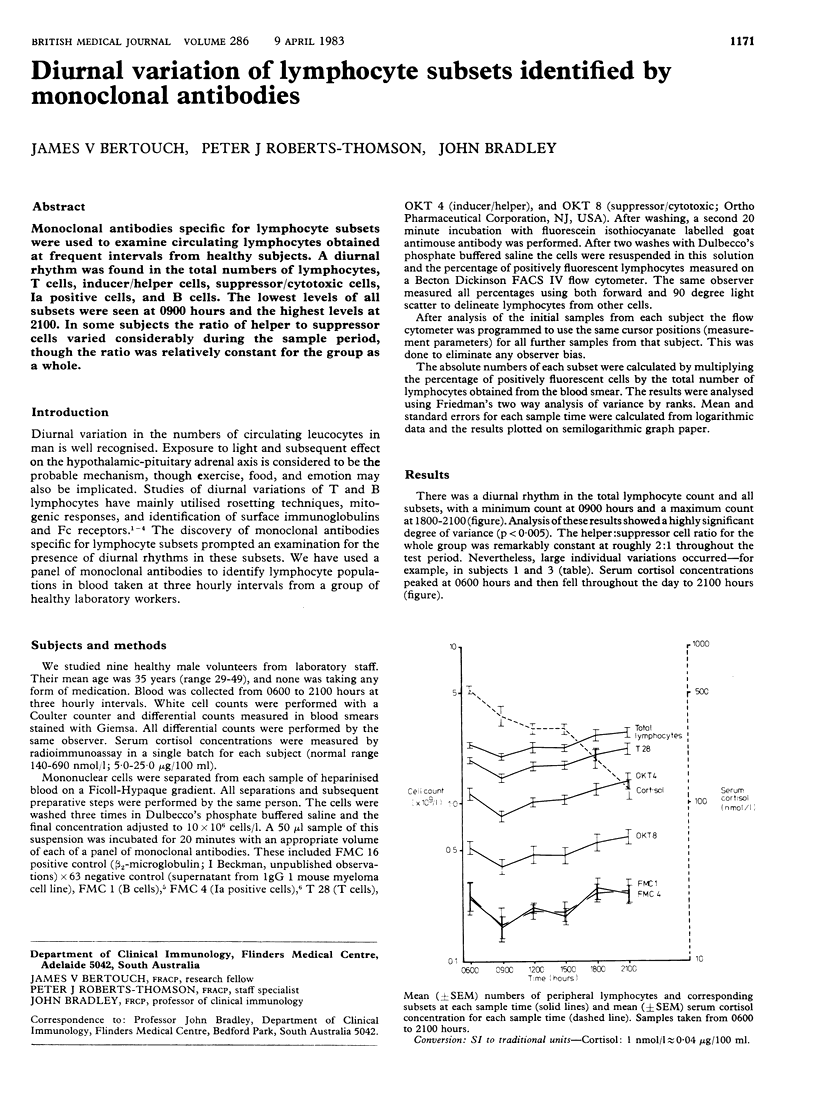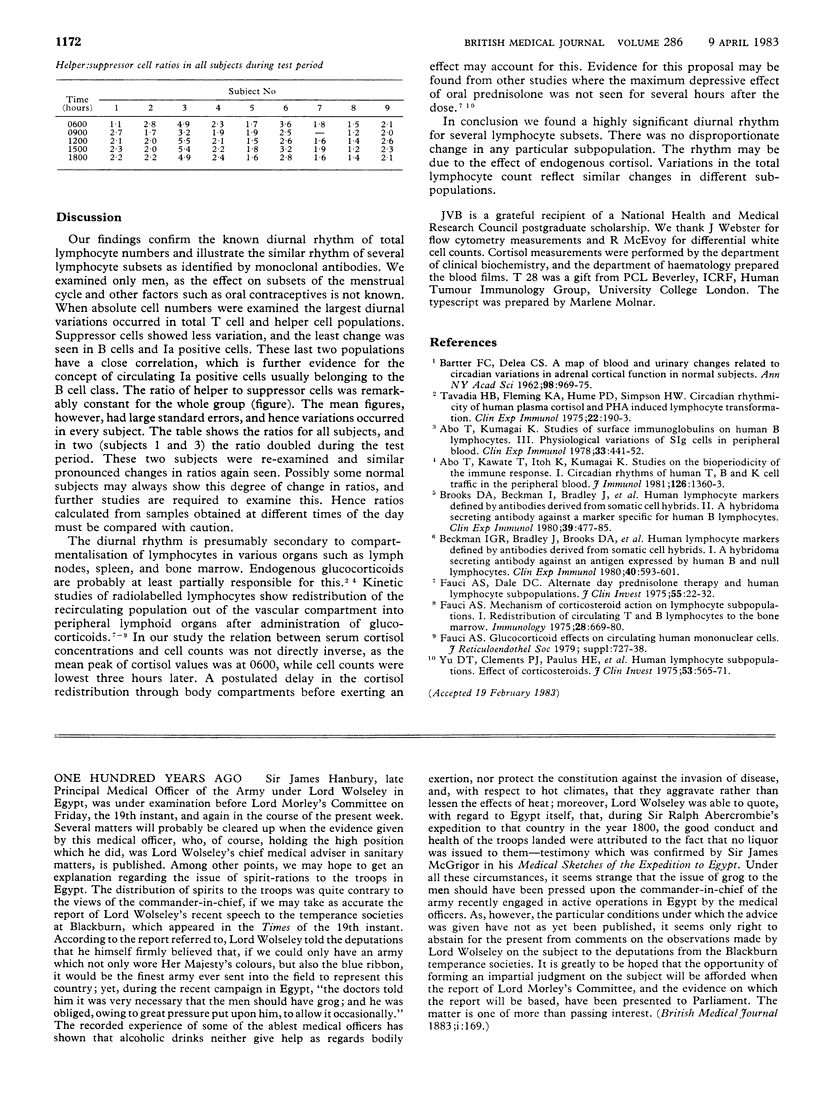Abstract
Monoclonal antibodies specific for lymphocyte subsets were used to examine circulating lymphocytes obtained at frequent intervals from healthy subjects. A diurnal rhythm was found in the total numbers of lymphocytes, T cells, inducer/helper cells, suppressor/cytotoxic cells, Ia positive cells, and B cells. The lowest levels of all subsets were seen at 0900 hours and the highest levels at 2100. In some subjects the ratio of helper to suppressor cells varied considerably during the sample period, though the ratio was relatively constant for the group as a whole.
Full text
PDF

Selected References
These references are in PubMed. This may not be the complete list of references from this article.
- Abo T., Kawate T., Itoh K., Kumagai K. Studies on the bioperiodicity of the immune response. I. Circadian rhythms of human T, B, and K cell traffic in the peripheral blood. J Immunol. 1981 Apr;126(4):1360–1363. [PubMed] [Google Scholar]
- Abo T., Kumagai K. Studies of surface immunoglobulins on human B lymphocytes. III. Physiological variations of SIg+ cells in peripheral blood. Clin Exp Immunol. 1978 Sep;33(3):441–452. [PMC free article] [PubMed] [Google Scholar]
- BARTTER F. C., DELEA C. S. A map of blood and urinary changes related to circadian variations in adrenal cortical function in normal subjects. Ann N Y Acad Sci. 1962 Oct 30;98:969–983. doi: 10.1111/j.1749-6632.1962.tb30612.x. [DOI] [PubMed] [Google Scholar]
- Beckman I. G., Bradley J., Brooks D. A., Kupa A., McNamara P. J., Thomas M. E., Zola H. Human lymphocyte markers defined by antibodies derived from somatic cell hybrids. II. A hybridoma secreting antibody against an antigen expressed by human B and null lymphocytes. Clin Exp Immunol. 1980 Jun;40(3):593–601. [PMC free article] [PubMed] [Google Scholar]
- Brooks D. A., Beckman I., Bradley J., McNamara P. J., Thomas M. E., Zola H. Human lymphocyte markers defined by antibodies derived from somatic cell hybrids. I. A hybridoma secreting antibody against a marker specific for human B lymphocytes. Clin Exp Immunol. 1980 Feb;39(2):477–485. [PMC free article] [PubMed] [Google Scholar]
- Fauci A. S., Dale D. C. Alternate-day prednisone therapy and human lymphocyte subpopulations. J Clin Invest. 1975 Jan;55(1):22–32. doi: 10.1172/JCI107914. [DOI] [PMC free article] [PubMed] [Google Scholar]
- Fauci A. S. Glucocorticoid effects on circulating human mononuclear cells. J Reticuloendothel Soc. 1979 Dec;26(Suppl):727–738. [PubMed] [Google Scholar]
- Fauci A. S. Mechanisms of corticosteroid action on lymphocyte subpopulations. I. Redistribution of circulating T and b lymphocytes to the bone marrow. Immunology. 1975 Apr;28(4):669–680. [PMC free article] [PubMed] [Google Scholar]
- Tavadia H. B., Fleming K. A., Hume P. D., Simpson H. W. Circadian rhythmicity of human plasma cortisol and PHA-induced lymphocyte transformation. Clin Exp Immunol. 1975 Oct;22(1):190–193. [PMC free article] [PubMed] [Google Scholar]
- Yu D. T., Clements P. J., Paulus H. E., Peter J. B., Levy J., Barnett E. V. Human lymphocyte subpopulations. Effect of corticosteroids. J Clin Invest. 1974 Feb;53(2):565–571. doi: 10.1172/JCI107591. [DOI] [PMC free article] [PubMed] [Google Scholar]


